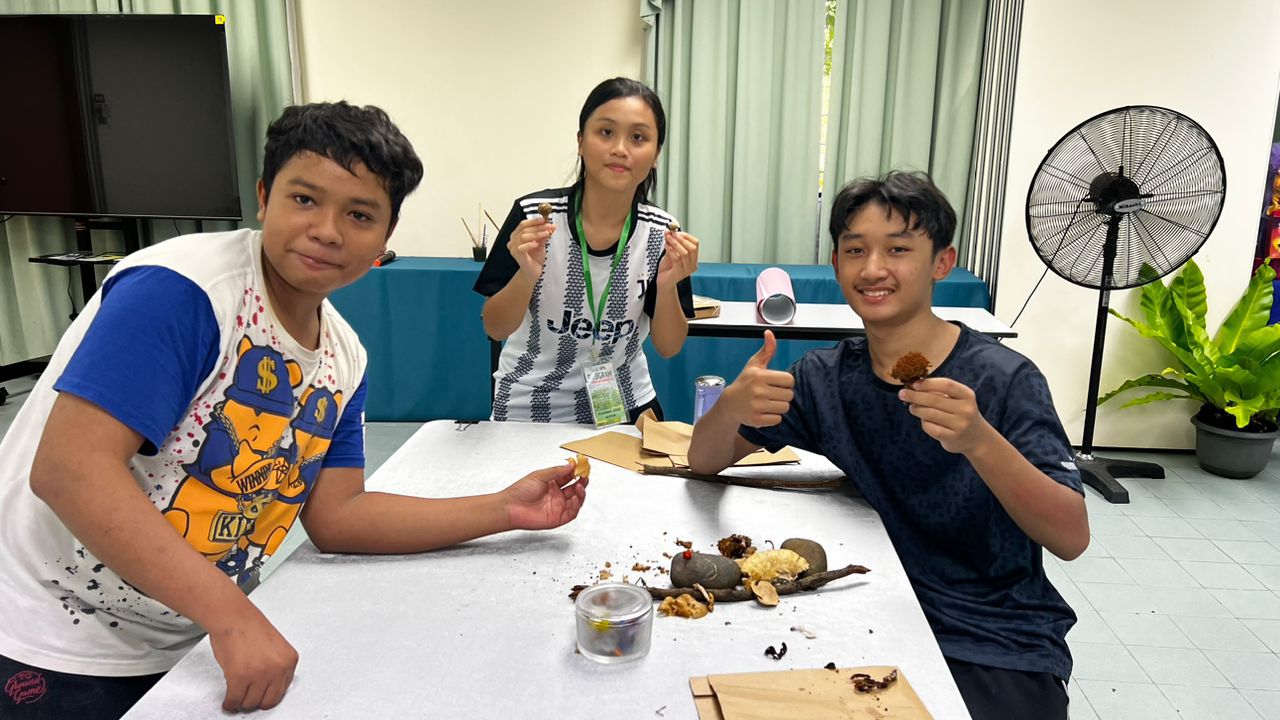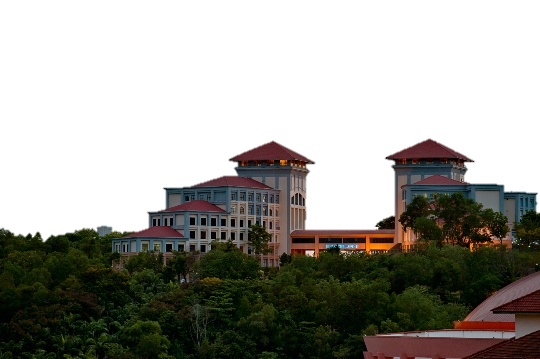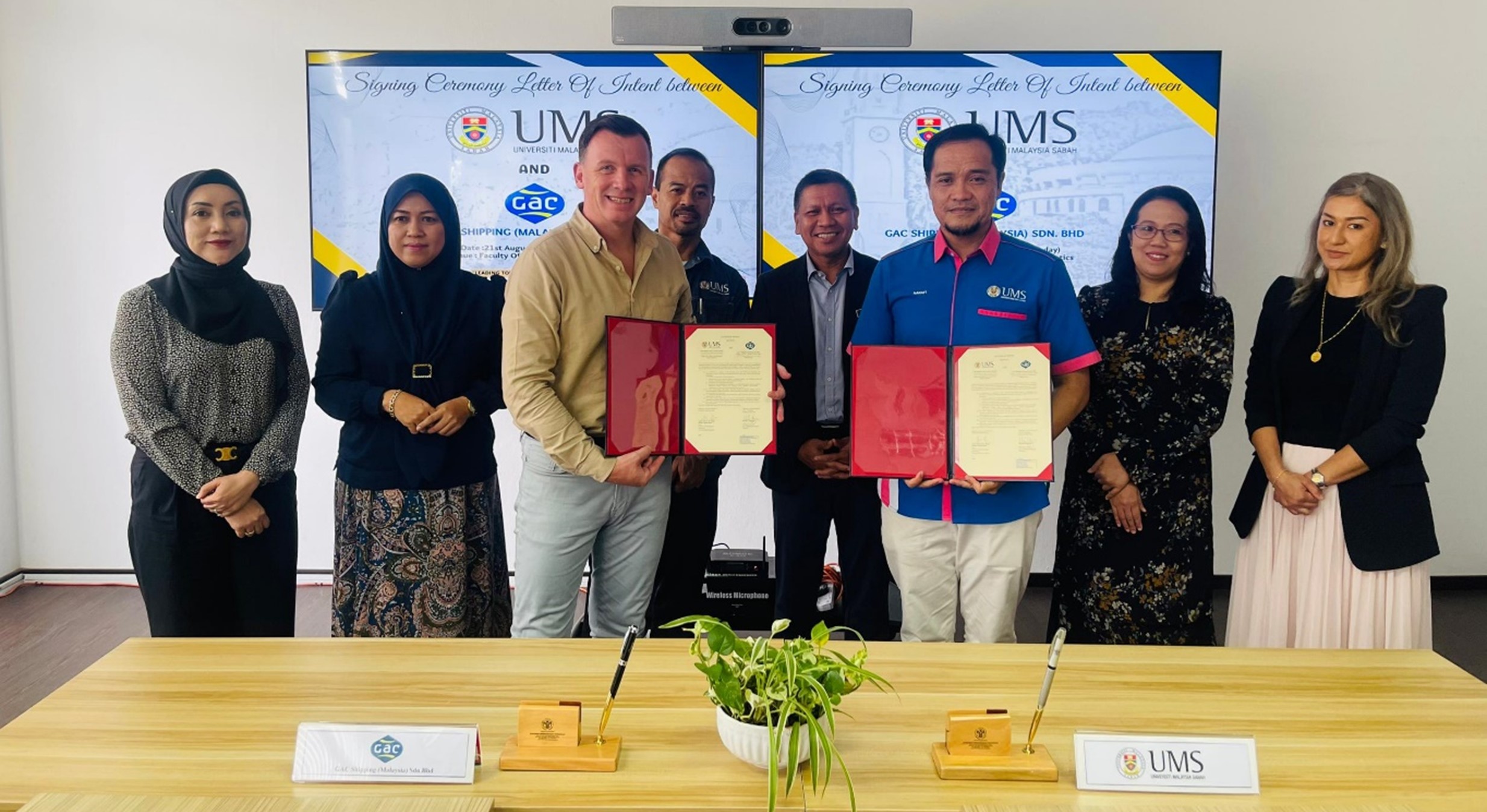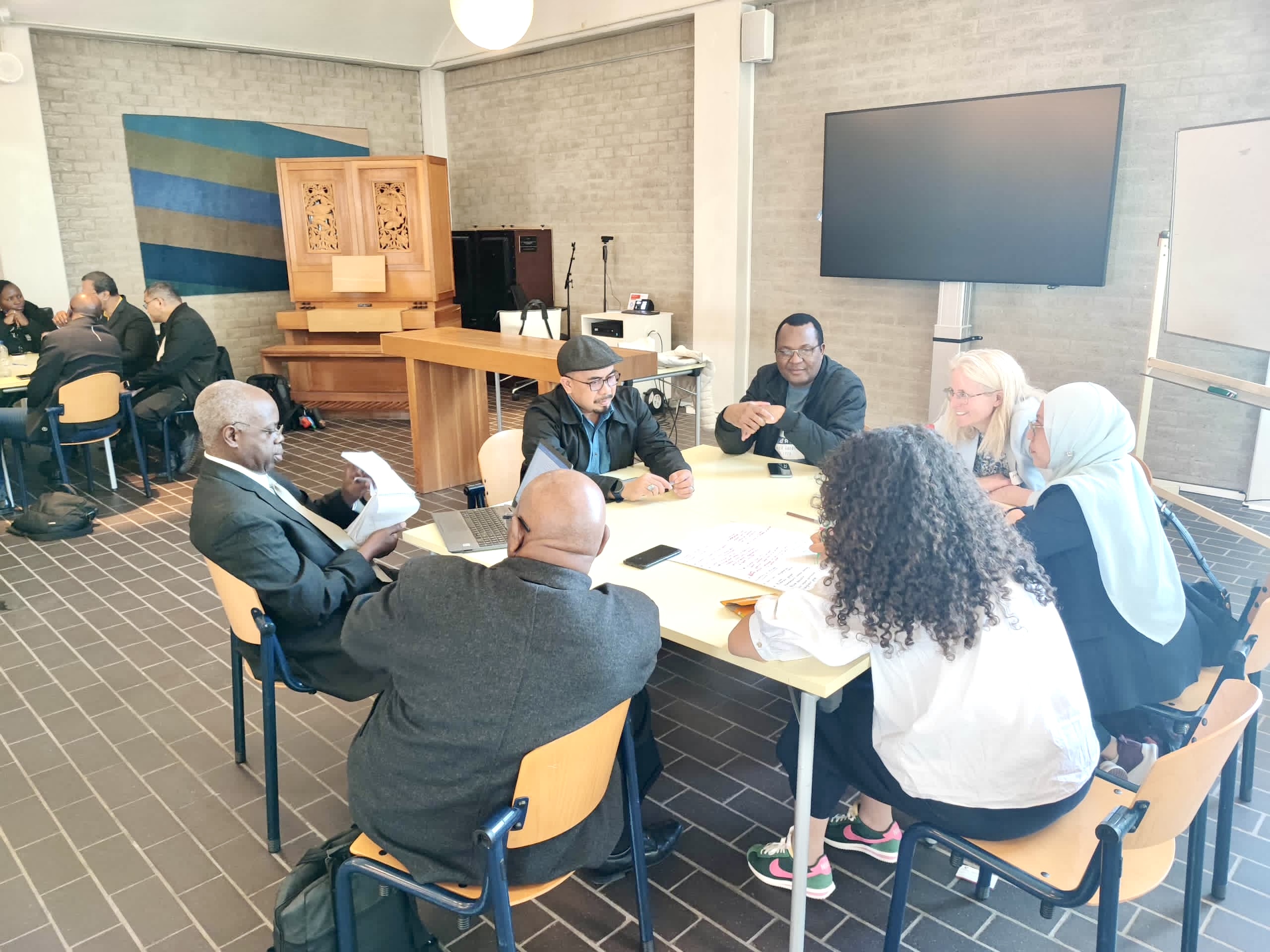- Hits: 148
First Record of Phaeoclavulina cokeri in Sabah, Malaysia: A Milestone in Mycological Discovery
 A significant breakthrough in the study of fungi has been achieved with the discovery of Phaeoclavulina cokeri in UMS Hill, Sabah, Malaysia, marking the first recorded instance of this species in the region.
A significant breakthrough in the study of fungi has been achieved with the discovery of Phaeoclavulina cokeri in UMS Hill, Sabah, Malaysia, marking the first recorded instance of this species in the region.
This exciting discovery was made by a group of children participating in the Friends of BORNEENSIS (FOB 2024) program consists of Muhammad Aqil Fahmi Mahadimenakbar (SMK Tebobon), Muhammad Daniel Ashraff Abdullah (SMK Likas) and Cleasha Joiee Alfius (SM All Saint), an initiative that emphasizes hands-on learning about biodiversity.
Phaeoclavulina cokeri, a coral fungus known for its distinctive branching, coral-like structure, was originally classified under the genus Ramaria by British mycologist E.J.H. Corner during his studies in the 1960s.
However, in 1976, a taxonomic revision based on genetic and morphological analysis led to its reclassification into the genus Phaeoclavulina.
The fungus is characterized by its pale yellow to reddish-brown color and its role in forming mycorrhizal associations with trees, playing a vital role in forest ecosystems by facilitating nutrient exchange and contributing to soil enrichment.
This new record of Phaeoclavulina cokeri in Sabah is particularly significant as it is more commonly found in North America, China, India, and parts of Southeast Asia.
The last recorded sighting of this species in the region was over 60 years ago. The discovery has sparked excitement among researchers and highlights the potential for further exploration of Sabah's rich fungal diversity.
In addition to Phaeoclavulina cokeri, the children consist of Sean Ho Min Jun (SM Lok Yuk Kota Kinabalu), Eory Glory Dharius (SK Rungus) and Isaac Sin Sang (SMK Likas) also encountered another rare species: Marasmius elegans, commonly known as the velvet parachute fungus.
This species, which features a reddish-brown cap and a whitish stipe with white hairs at its base, is typically found in the eucalyptus forests of Australia.
The species was first described as Collybia elegans by Australian mycologist John Burton Cleland in 1933, and later transferred to the genus Marasmius by Cheryl Grgurinovic in 1997.
The discovery of Marasmius elegans represents another new record for Malaysia, further solidifying the importance of fungal research in the region.
The dual discovery of these two rare species underscores the need for continued biodiversity research in Sabah. It also showcases the value of involving youth in such efforts, as their curiosity and enthusiasm can contribute to important scientific breakthroughs.
"This discovery not only enriches our understanding of fungal diversity in Sabah but also emphasizes the untapped potential that exists in our forests," said Assoc. Prof. Dr. Fiffy Hanisdah Saikim, Director of the Institute for Tropical Biology and Conservation (IBTP), which organized the Friends of BORNEENSIS 2024 program.
As the region’s mycological knowledge continues to grow, further studies on these newly discovered fungi will be critical in understanding their ecological roles and ensuring the preservation of Sabah's unique biodiversity.



 Universiti Malaysia Sabah (UMS) has signed a Letter of Intent (LoI) with Sabah Bird Watcher Association (SBWA) as both parties were keen to cement the on-going collaboration in a signing ceremony at UMS Campus.
Universiti Malaysia Sabah (UMS) has signed a Letter of Intent (LoI) with Sabah Bird Watcher Association (SBWA) as both parties were keen to cement the on-going collaboration in a signing ceremony at UMS Campus. Universiti Malaysia Sabah has signed a Letter of Intent (LoI) through a collaboration involving three faculties, namely the Faculty of Computing and Informatics (FKI), the Faculty of Science and Natural Resources (FSSA), and the Faculty of Social Sciences and Humanities (FSSK), with GAC Shipping (Malaysia) Sdn. Bhd recently.
Universiti Malaysia Sabah has signed a Letter of Intent (LoI) through a collaboration involving three faculties, namely the Faculty of Computing and Informatics (FKI), the Faculty of Science and Natural Resources (FSSA), and the Faculty of Social Sciences and Humanities (FSSK), with GAC Shipping (Malaysia) Sdn. Bhd recently. Universiti Malaysia Sabah (UMS) is raising the bar in educational outreach and research through U-science, a pioneering Citizen Science initiative within the university’s broader Open Science movement.
Universiti Malaysia Sabah (UMS) is raising the bar in educational outreach and research through U-science, a pioneering Citizen Science initiative within the university’s broader Open Science movement. KOTA KINABALU - Esteemed neurosurgeons from Hospital Queen Elizabeth 2 (HQE2) and neuroanaesthetist of Universiti Malaysia Sabah (UMS) successfully performed awake mini craniotomy on an 88-year-old man who sustained a traumatic brain injury (TBI).
KOTA KINABALU - Esteemed neurosurgeons from Hospital Queen Elizabeth 2 (HQE2) and neuroanaesthetist of Universiti Malaysia Sabah (UMS) successfully performed awake mini craniotomy on an 88-year-old man who sustained a traumatic brain injury (TBI).